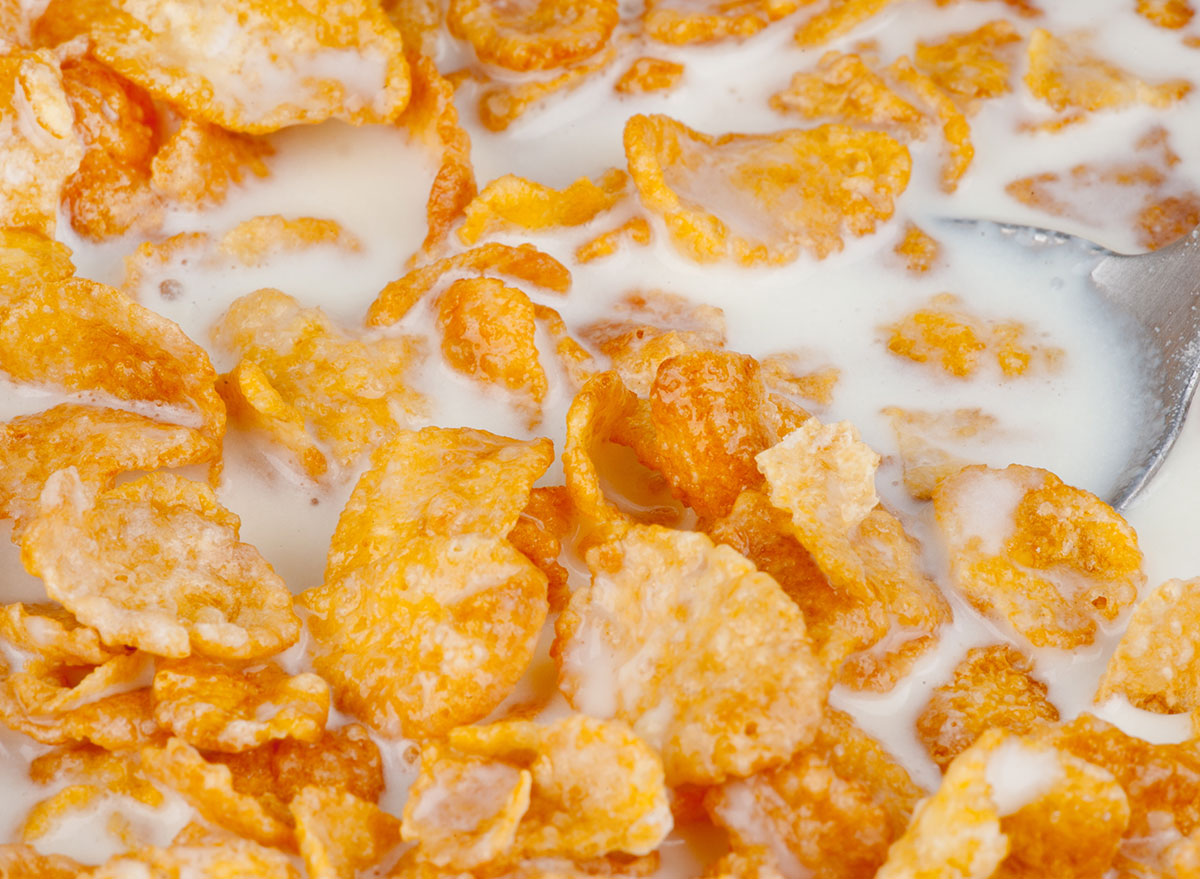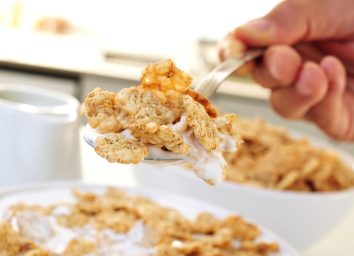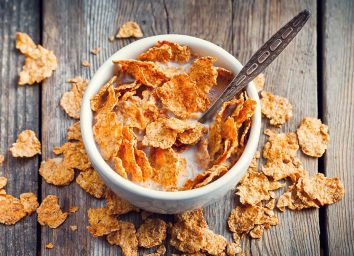One Major Side Effect of Eating Too Much Cereal, Says Science

Open the door of your pantry and in all likelihood, you'll find at least one colorful box of cold breakfast cereal inside. You may not eat it for breakfast (12% of people in the United States don't eat the morning meal), but it's probably there. Forty-three percent of cereal consumers eat cereal as a snack, according to Mintel. And cereal is still the third most popular supermarket product behind carbonated beverages and bread at 2.7 billion packages sold. That breaks out to an average of 160 bowls of cereal per American each year.
Interestingly, while Mintel's survey found that three in 10 cereal consumers say they are eating less heavily sweetened cereals for health reasons, the same amount say they choose cereal that tastes good regardless of how nutritious it is. What's more, six in 10 cereal eaters say they wish cereals kept them feeling full longer. The brevity of that hunger fix points to one of the biggest side effects of eating the kind of cereal Americans are still sweet on: Your blood sugar spikes and so does your insulin.
Related: Surprising Habits That Can Lead to Diabetes, says Science.
Cold breakfast cereals are one of the most highly processed foods you can eat and many that our tongues find so appealing are loaded with added sugars. When you consume a massive amount of sugar, especially from a highly-processed, low-fiber cereal, your blood sugar quickly rises and your body responds by releasing the hormone insulin from your pancreas to regulate that surge of sugar and allow the glucose to enter the body's cells for energy. An hour or two after your insulin deals with that sugar rush, your blood sugar takes a nosedive, leaving you feeling drained and triggering a craving for another quick sugar fix.
Studies suggest that highly refined cereals drive hunger and can lead to overeating. A clinical trial published in 2013 in the European Journal of Nutrition compared the effect of a cereal breakfast to an egg breakfast on satiety and calorie intake and found that people were less hungry after the eggs and consumed fewer calories over the course of the day than the cereal eaters.
Sugary foods also impact the reward center of the brain, causing a release of the feel-good chemicals dopamine and serotonin that researchers reporting in the journal Clinical Chemistry say elicits addiction-like cravings. Over time, consuming too much sugar can increase your risk of such health problems as obesity, type 2 diabetes, non-alcoholic fatty liver disease, cancer, and heart disease.
What's too much cereal?
The more helpful question may be what's too much sugar in cereal? The American Heart Association recommends limiting added sugars to 24 grams for most women and 36 grams for most men. For reference, four grams of sugar equal one teaspoon.
In 2014 the Environmental Working Group (EWG) published the findings of a study in which researchers analyzed the sugar content of 84 popular cereal brands and found that 44 cereals contained more sugar per serving than the 11 grams you get from three Chips Ahoy! Cookies. One of the worst offenders is Kellogg's Honey Smacks, weighing in at 18 grams, which is more sugar than in a Hostess Twinkie. (Read more: The Unhealthiest Cereals on the Planet.)
The EWG study focused on cereals marketed toward children, but many adult cereals are just as sugary. Kellogg's Raisin Bran, for example, contains 18 grams of sugar that more than the 10 grams in Trix, surprising since, after all, "Trix are for kids!"
What makes cold breakfast cereal doubly problematic for your health is the fact that, besides the added sugars, most cereals are made with refined grains, which have fewer nutrients and less fiber than those made with whole grains. Fiber in your food slows the absorption of sugars into your bloodstream, reducing the need for that insulin spike.
How can you find healthier cereals?
Nutrition experts recommend you look for cereal packaging that reads "100% whole grain" or look at the ingredients list and make sure the first two grains listed are called "whole" or contain the words "oats," "sprouted grains" or "ancient grains." Whole grain cereals can have as much as six times more fiber than refined cereals like corn flakes and crisped rice. Also, check nutrition facts labels for cereals with less than 6 grams of added sugars per serving. Put back any cereals with sugar listed in the top three spots on the ingredients label.
Better yet, skip the cereal altogether and try one of these 10 Best Instant Breakfasts for Weight Loss.
For more healthy eating news, make sure to sign up for our newsletter!







